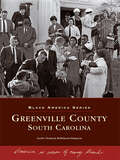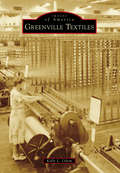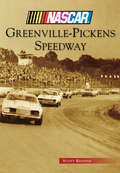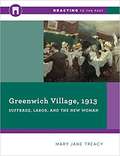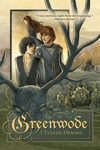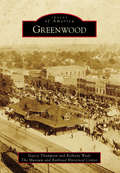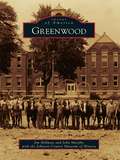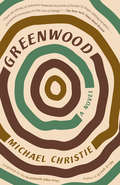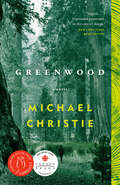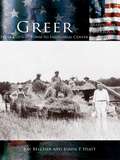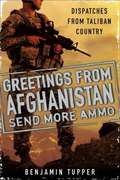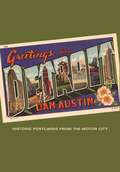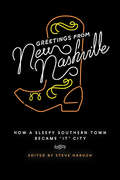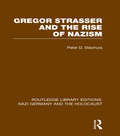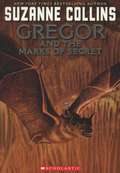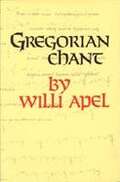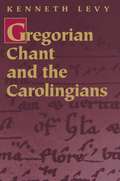- Table View
- List View
Greenville County, South Carolina (Black America Series)
by Leola Clement Robinson-SimpsonCradled at the foothills of the beautiful Blue Ridge Mountains and once known as the "Textile Center of the South," Greenville has evolved into a prosperous hub for corporate development and global commerce. Greenville County's African American community, proud and resourceful, has strong roots dating back to 1770, when blacks helped to carve the county out of an upstate wilderness. The experiences of the black community and its long relationship with whites up to the civil rights movement helped to create the climate for the kaleidoscope of races and cultures in Greenville today.
Greenville Textiles (Images of America)
by Kelly L. OdomGreenville's textile heritage is what made the community the economic force it is today. From its antebellum beginnings with only a handful of mills, Greenville continued to grow industrially as more and more Northern investors saw financial opportunity in the area. With its notable feats, such as having the largest textile mill under one roof to its many mills fighting off "flying squadrons" during the General Textile Strike of 1934, the county's textile past is as rich and colorful as the fabrics it produced. Greenville's ascension to the "Textile Capital of the World" was unfortunately followed by the flood of overseas goods, resulting in the closing of many Upstate institutions. Though these mills are now silent, their efforts are what attracted so many other industries to the area.
Greenville-Pickens Speedway
by Scott KeepferAs the second-oldest NASCAR track still running weekly races, Greenville-Pickens has earned a unique niche in racing history. In 1959, local driver David Pearson sped to a record 15 victories in one season, jump-starting a Hall of Fame career. As a young boy, Dale Earnhardt played in the infield while his father, Ralph, raced to the track championship in 1965. In 1971, ABC's Wide World of Sports televised the first live, start-to-finish NASCAR race at Greenville-Pickens. Many big names have competed here, but for every David Pearson and Richard Petty, there have been dozens of Donnie Bishops and Toby Porters: local favorites providing weekly thrills for a loyal fan base.
Greenwich Village 1913: Suffrage, Labor, And The New Woman
by Mary Jane TreacyIn this Reacting to the Past game, the classroom is transformed into Greenwich Village in 1913, where rebellious “free spirits” gather. Exposed to ideas like woman suffrage, socialism, birth control, and anarchism, students experiment with forms of political participation and bohemian self-discovery. Reacting to the Past is an award-winning series of immersive role-playing games that actively engage students in their own learning. Students assume the roles of historical characters and practice critical thinking, primary source analysis, and argument, both written and spoken.
Greenwode (The Wode #1)
by J Tullos Hennig2nd EditionBook One of The WodeThe Hooded One. The one to breathe the dark and light and dusk between.... When an old druid foresees this harbinger of chaos, he also glimpses its future. A peasant from Loxley will wear the Hood and, with his sister, command a last, desperate bastion of Old Religion against New. Yet a devout nobleman's son could well be their destruction--Gamelyn Boundys, whom Rob and Marion have befriended. Such acquaintance challenges both duty and destiny. The old druid warns that Rob and Gamelyn will be cast as sworn enemies, locked in timeless and symbolic struggle for the greenwode's Maiden. Instead, a defiant Rob dares his Horned God to reinterpret the ancient rites, allow Rob to take Gamelyn as lover instead of rival. But in the eyes of Gamelyn's Church, sodomy is unthinkable... and the old pagan magics are an evil that must be vanquished.First Edition published by Dreamspinner Press, January 2013
Greenwood
by The Museum and Railroad Historical Center Bethany Wade Stacey ThompsonNamed by an early settler's wife as she gazed at the lush surroundings of her summer home, Greenwood was incorporated on December 21, 1857. Growing from a fledgling village into a town that at one time boasted "the widest Main Street in the world," the city grew due to two industries: the railroad and textiles. Railroad companies such as Piedmont & Northern and Seaboard built their way through Greenwood, while textile tycoons such as James C. Self and John Pope Abney worked hard to increase productivity and job opportunities. Soon, education, businesses, and community services followed suit. Greenwood was booming, making the small town a place of educational advancement, great entrepreneurial spirit, and community-minded individuals.
Greenwood (Images of America)
by John Murphy Jim Hillman Johnson County Museum of HistoryBy 1813, in an area originally inhabited by Native Americans, including a significant Delaware Indian village located on White River's western banks, the future Greenwood was made safe for settlement by the Kentucky and Indiana militias. In 1818, with the New Purchase treaties and establishment of Whetzel Trace, the earliest east-west transportation route through central Indiana, the dense, overgrown forest became readied for settlement. Arising from humble beginnings as Smocktown, the community was officially named Greenfield in 1825, followed by renaming to Greenwood in 1833. The territory has seen tremendous growth through the decades since John B. and Isaac Smock arrived, transforming the land from a pioneer village into a contemporary hub of business and industry. Accused of being a "bedroom community" of Indianapolis, Greenwood strives to maintain its relevance as a unique and historically proud community.
Greenwood: A Novel
by Michael ChristieIt’s 2038 and Jacinda (Jake) Greenwood is a storyteller and a liar, an overqualified tour guide babysitting ultra-rich vacationers in one of the world’s last remaining forests. It’s 2008 and Liam Greenwood is a carpenter, sprawled on his back after a workplace fall, calling out from the concrete floor of an empty mansion. <P><P>It’s 1974 and Willow Greenwood is out of jail, free after being locked up for one of her endless series of environmental protests: attempts at atonement for the sins of her father’s once vast and violent timber empire. <P><P>It’s 1934 and Everett Greenwood is alone, as usual, in his maple-syrup camp squat, when he hears the cries of an abandoned infant and gets tangled up in the web of a crime, secrets, and betrayal that will cling to his family for decades. <P><P>And throughout, there are trees: a steady, silent pulse thrumming beneath Christie’s effortless sentences, working as a guiding metaphor for withering, weathering, and survival. A shining, intricate clockwork of a novel, Greenwood is a rain-soaked and sun-dappled story of the bonds and breaking points of money and love, wood, and blood—and the hopeful, impossible task of growing toward the light.
Greenwood: A Novel
by Michael ChristieLONGLISTED FOR THE 2019 SCOTIABANK GILLER PRIZEFrom the award-winning author of If I Fall, If I Die comes a propulsive, multigenerational family story, in which the unexpected legacies of a remote island off the coast of British Columbia will link the fates of five people over a hundred years. Cloud Atlas meets The Overstory in this ingenious nested-ring epic set against the devastation of the natural world.They come for the trees. It is 2038. As the rest of humanity struggles through the environmental collapse known as the Great Withering, scientist Jake Greenwood is working as an overqualified tour guide on Greenwood Island, a remote oasis of thousand-year-old trees. Jake had thought the island's connection to her family name just a coincidence, until someone from her past reappears with a book that might give her the family history she's long craved. From here, we gradually move backwards in time to the years before the First World War, encountering along the way the men and women who came before Jake: an injured carpenter facing the possibility of his own death, an eco-warrior trying to atone for the sins of her father's rapacious timber empire, a blind tycoon with a secret he will pay a terrible price to protect, and a Depression-era drifter who saves an abandoned infant from certain death, only to find himself the subject of a country-wide manhunt. At the very centre of the book is a tragedy that will bind the fates of two boys together, setting in motion events whose reverberations we see unfold over generations, as the novel moves forward into the future once more. A magnificent novel of inheritance, sacrifice, nature, and love that takes its structure from the nested growth rings of a tree, Greenwood spans generations to tell the story of a family living and dying in the shadows cast by its own secrets. With this breathtaking feat of storytelling, Michael Christie masterfully reveals the tangled knot of lies, omissions, and half-truths that exists at the root of every family's origin story.
Greer: From Cotton Town to Industrial Center
by Joada P. Hiatt Ray BelcherOriginating as Greer's Station, a burgeoning settlement on the edge of an antebellum plantation, Greer prospered as a link in the cotton belt of the South. Agricultural hub and industrial powerhouse, the town flourished along the railroad and gained prominence as a bustling trading post. Greer has braved market manipulation, commercial competition, and agricultural decimation, but strives even today to preserve the continuity of its community identity.
Greetings From Afghanistan, Send More Ammo
by Benjamin Tupper"Raw, direct, and powerful. . . This work is vitally important. " -Ken Stern, former CEO of National Public Radio Captain Benjamin Tupper spent a year in Afghanistan in an Embedded Training Team, tasked with training, leading in combat, and mentoring the Afghan Army to victory against the brutal Taliban. Writing and recording from a remote outpost, Tupper's dispatches were posted on the blog The Sandbox and broadcast on NPR, bringing vivid snapshots of America's longest ongoing war to a wide audience back home. Here, he takes us inside the intricacies of the war, opening up a unique and multifaceted view of both Afghan culture and the daily life of an American soldier. From the rush of gunfire to surreal, euphoric moments of cross-cultural understanding, this emotional and thought- provoking narrative is rich with humor, eloquence and contradiction. Deeply personal and darkly funny, Tupper illuminates the challenges of the war, vividly bringing to life both the mundane and the extraordinary and seeking a way forward.
Greetings from Chicago
by Editors of Thunder Bay PressWhen it's time to go back to the daily grind, it's easy to miss the fun and excitement of vacation - especially if you've just spent time in a city like Chicago. Home to remarkable landmarks like Wrigley Field, vibrant neighborhoods like Wicker Park and Logan Square, and the Art Institute with its stunning works of art, it's the type of place that inspires anyone who visits.Greetings from Chicago features loads of fun facts about everything from songs with lyrics about Chicago to trivia about the people, the neighborhoods, and the culture of the Midwest town. It's the perfect keepsake for anyone nostalgic for days rolling along on the El - or anyone who's ever dreamed of doing it.
Greetings from Detroit: Historic Postcards from the Motor City
by Dan AustinGreetings from Detroit: Historic Postcards from the Motor City offers a glimpse into the past through more than two hundred historic postcards of Detroit from the early 1900s to the 1950s, compiled and presented in full color by Dan Austin of HistoricDetroit.org. From familiar sights to long lost landmarks, this book pairs vintage views with rich stories from the Motor City’s yesteryear. In the era before cameras became commonplace, postcard shops were everywhere—allowing folks to send snapshots of their travels to friends and family, or to take home as mementos. Many of these old postcards are now sought after collectibles today, offering a rare look back at a time of tremendous growth and change across Detroit during the first half of the twentieth century. Divided into six sections, Greetings from Detroit showcases the changing times and interests of the city—highlighting some of the distinct neighborhoods, including Midtown, southwest Detroit, and the downtown area. A portion of the book is devoted to Detroit’s parks, with special interest in Belle Isle, Palmer Park, Clark Park, and Water Works Park. The book also shines a light on the majestic steamers that often dotted the Detroit River. Greetings from Detroit gathers some of the best, most illustrative postcards in one place and—for the first time, in full color—frames them alongside meticulously researched writing, offering context and stories behind each image. It is a history book. It is a picture book. It is a window into the history of Detroit. As the city grows and changes, there is value in observing a Detroit that is frozen in time. This beautiful collection would make an excellent conversation piece in the home of any local history aficionado.
Greetings from Las Vegas
by Peter MoruzziThis book of vintage Vegas ephemera offers a guided tour of Sin City&’s rise out of the Mojave Desert to become a major entertainment destination.Greetings from Las Vegas tells the story of Las Vegas during its golden age in the first half of the twentieth-century. The city&’s miraculous evolution comes alive through a fun and diverse collection of vintage photos, picture postcards, matchbooks, ads, and other ephemera. This beautifully illustrated volume captures the glamor of Fremont Street and the Las Vegas Strip, landmarks such as the Sands and Riviera hotel casinos, and the cream of Hollywood glitterati, including Frank, Sammy, Dino, and the rest of the Rat Pack. Author Peter Moruzzi&’s sharp and irreverent commentary provides essential context for the visual treats as well as a unique historical take on the evolution of this desert playground.
Greetings from London
by Editors of Thunder Bay PressTrying to make the guards laugh at Buckingham Palace. Touring the Tower of London. Shopping in the flea markets of Camden and Notting Hill. These are but a few of the activities that would make up the perfect London vacation. It's a trip everyone should take-but until you can, there's Greetings from London!This unique book offers an introduction to what makes London so special: its history, its architecture, its people and its places. Full-color images tell a compelling story of the city's past and present, while quotes from famous writers explain why they love the city-and why you should too!London is calling! With Greetings from London, you'll experience the city as never before, in all its royal, renowned glory.
Greetings from Los Angeles
by Peter MoruzziThis book of vintage photographs, postcards, magazine ads, and other ephemera tells the story of Los Angeles from dusty pueblo to thriving metropolis.Greetings from Los Angeles tells the story of the city&’s long and largely forgotten history, from its early years as a tiny Spanish village through its many transitions over the centuries. Here are rare glimpses of Chinatown&’s evolution; the orange empire; backyard oil wells; Venice of America; the roaring 1920s and corrupt 1930s; glamorous Wilshire Boulevard; movie studios and the lavish movie star estates; as well as theme parks such as Disneyland, Knott&’s Berry Farm, and Marineland of the Pacific. Through these images, readers witness the birth of midcentury modernism, futuristic Googie coffee shops, and the space-age Los Angeles International Airport. Author and architectural historian Peter Moruzzi offers insightful commentary that provides essential historical context
Greetings from New Nashville: How a Sleepy Southern Town Became "It" City
by Steve HaruchIn 1998, roughly 2 million visitors came to see what there was to see in Nashville. By 2018, that number had ballooned to 15.2 million. In that span of two decades, the boundaries of Nashville did not change. But something did. Or rather, many somethings changed, and kept changing, until many who lived in Nashville began to feel they no longer recognized their own city. And some began to feel it wasn't their own city at all anymore as they were pushed to its fringes by rising housing costs. Between 1998 and 2018, the population of Nashville grew by 150,000. On some level, Nashville has always packaged itself for consumption, but something clicked and suddenly everyone wanted a taste. But why Nashville? Why now? What made all this change possible? This book is an attempt to understand those transformations, or, if not to understand them, exactly, then to at least grapple with the question: What happened?
Greetings from Rome
by Editors of Thunder Bay PressWalk the streets of Rome, and you'll experience thousands of years of history come alive. But as you marvel at the beauty of the Sistine Chapel and the majesty of the Colosseum, you will also pass elegantly chic shops and restaurants serving the best spaghetti carbonara you've ever tasted. The present and the past mingle easily in Rome - and in this amazing book!Greetings from Rome details the history, architecture, people, and culture of this awe-inspiring city. With full-color images of sites such as the Spanish Steps, the Pantheon, and St. Peter's Basilica and quotes from famous writers that offer their own love for the city, this exciting book tells the complete story of Rome from its ancient beginnings to its fantastic present.Toss a coin in Trevi Fountain and make a wish! Once you've read Greetings from Rome, you'll want to return to the Eternal City again and again.
Greetings from Seattle
by Editors of Thunder Bay PressSeattle was the birthplace of rock legend Jimi Hendrix, as well as the musical style of "grunge." It's also the birthplace of Starbucks, and the current home of Microsoft, Amazon, and many other major corporations. Filled with both culture and commerce, Seattle is a study in contrasts - and, with Mount Rainier and the Space Needle looming in the skyline, a study in majestic beauty as well.The many sides of this unusual city are revealed in Greetings from Seattle, which tells the story of the Emerald City's history, architecture, people, and places with stunning full-color images and quotes from writers detailing the many reasons to love this terrific town.With Greetings from Seattle, you won't even have to brave the city's famous drizzle to catch a glimpse of all its glory!
Gregor Mendel - The Scientist: Based on Primary Sources 1822-1884 (Springer Biographies)
by Anna Matalová Eva MatalováThe major purpose of this book is to present Johann Gregor Mendel (1822-1884) in a real and interesting way based on the most recent historical research and analysis of authentic sources. The authors aim to show Mendel´s scientific thinking and inner feelings together with his environment and to communicate his message as a multifaceted personality and modern experimentalist.The book draws from the only existing short sketch of Mendel´s youth, his letters and the biographical ceiling paintings that were made according to his proposal. They form the basis of the self-portrait concept. The structure of the book follows thematic groups covering Mendel´s activities from a poor village boy in search for education and financial security, as not being physically suitable for running his father's farm. The book does not perpetuate the myths invented by some creative authors to make Mendel´s biography more attractive. Mendel´s life and work are dramatic enough without those embellishments. Mendel found happiness in science and he was able to explain the theory of new scientific facts. He was not a tragic figure, he did not work to become famous, but to be useful. His pea research has now been appreciated as a genius accomplishment of a scientist. The book is published at the occasion of Mendel´s birthday bicentennial.
Gregor Strasser and the Rise of Nazism (Routledge Library Editions: Nazi Germany and the Holocaust)
by Peter D. StachuraThe most influential and substantial leader, after Hitler, in the pre-1933 National Socialist Party was Gregor Strasser. This book (originally published in 1983 but as yet not superseded) is a comprehensive and scholarly assessment of Strasser’s significant and ultimately tragic career, based largely on previously unpublished German archival material. Strasser’s importance as a Nazi propagandist, organiser, ideologue and spokesman is examined and the analysis and interpretation which follow are fundamentally revisionist in that many of the accepted ideas about Strasser’s career are challenged and shown to be untenable. The book provides important insights into an interesting personality which in turn considerably enhances our understanding of the character of early National Socialism and the politics of the Weimar Republic.
Gregor and the Marks of Secret (Underland Chronicles Book #4)
by Suzanne CollinsGregor is drawn even deeper into a brewing crisis. For generations rats have run the mice out of whatever lands they've claimed, but now the mice are disappearing and Gregor must find out why.
Gregorian Chant
by Willi ApelThis extensive survey describes the evolutionary processes of its long history as well as its definition and terminology, the structure of the liturgy, the texts, the notation, the rhythm, the tonality, and the methods and forms of psalmody.
Gregorian Chant and the Carolingians
by Kenneth LevyA world-renowned scholar of plainchant, Kenneth Levy has spent a portion of his career investigating the nature and ramifications of this repertory's shift from an oral tradition to the written versions dating to the tenth century. In Gregorian Chant and the Carolingians, which represents the culmination of his research, Levy seeks to change long-held perceptions about certain crucial stages of the evolution and dissemination of the old corpus of plainchant--most notably the assumption that such a large and complex repertory could have become and remained fixed for over a century while still an oral tradition. Levy portrays the promulgation of an authoritative body of plainchant during the reign of Charlemagne by clearly differentiating between actual evidence, hypotheses, and received ideas. How many traditions of oral chant existed before the tenth century? Among the variations noted in written chant, can one point to a single version as being older or more authentic than the others? What precursors might there have been to the notational system used in all the surviving manuscripts, where the notational system seems fully formed and mature? In answering questions that have long vexed many scholars of Gregorian chant's early history, Levy offers fresh explanations of such topics as the origin of Latin neumes, the shifting relationships between memory and early notations, and the puzzling differences among the first surviving neume-species from the tenth century, which have until now impeded a critical restoration of the Carolingian musical forms.
